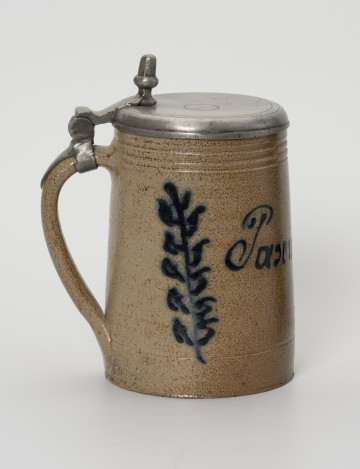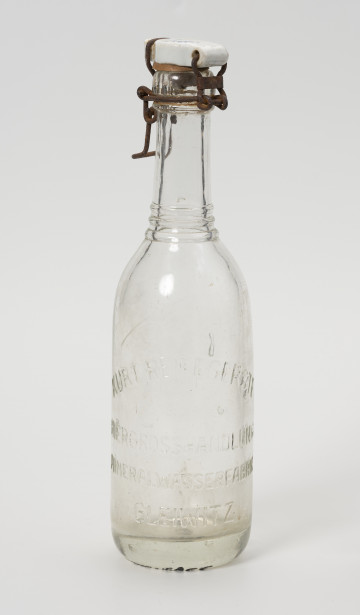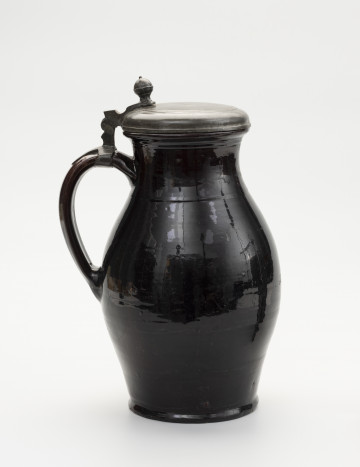
Beer stein
1840 — 1860
National Museum in Szczecin
Part of the collections: Material culture of West Pomerania, Folk ceramics
Bartmann jugs, German: "Bartmannskrug", are prominent among the vessels produced at the pottery centre in Frechen (North Rhine-Westphalia). These vessels have a spherical or pear-shaped belly and a short, narrow neck on which a man's face with a beard was placed. In addition to beards, the decoration of the neck and belly of jugs of this type also included floral motifs, phrases or medallions. The belly of the featured piece is decorated with three medallions featuring heraldic motifs on a coat-of-arms shield topped with a crown, one of the elements of which is a walking lion, the emblem of the Dukes of Jülich, who ruled Frechen for many centuries. Potters made such vessels in the 16th and 17th centuries, and the early 18th century saw a decline of their production. Bartmann jugs were made of stoneware from local clay deposits. Stoneware is a type of pottery with a firmly baked sherd, fired at temperatures above 1200º C, making it much less absorbent than products received from firing at lower temperatures. Their range of colours, on the other hand, was the result of a salt glaze coating obtained by throwing table salt into the pottery kiln. At temperatures above 1200º C, the salt dissolved when exposed to steam and formed hydrochloric acid and sodium hydroxide. Together with alumina and quartz, it formed a glassy, homogeneous surface with a characteristic intense brown colour on the top. Often used for storing wine, the Frechen jugs became known so well throughout Europe that they were incorporated into the 1928 town coat of arms, on which a walking lion holds a bearded jug in its paw. The object from the Szczecin museum was donated to the collection in 1971 by a fisherman who retrieved it in the Baltic Sea while fishing with a net near Dziwnów (Kamień Pomorski County). Iwona Karwowska
Other names
Bartmannskrug
Author / creator
Object type
pitcher, jug
Technique
pottery techniques, throwing (pottery technique)
Material
stoneware
Origin / acquisition method
donation
Creation time / dating
Creation / finding place
Owner
Muzeum Narodowe w Szczecinie
Identification number
Location / status

1840 — 1860
National Museum in Szczecin

1900 — 1945
National Museum in Szczecin

1850 — 1900
National Museum in Szczecin
DISCOVER this TOPIC
National Museum in Lublin
DISCOVER this PATH
Educational path